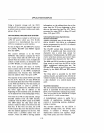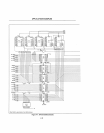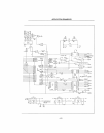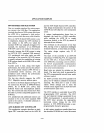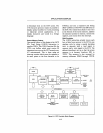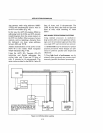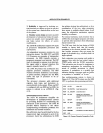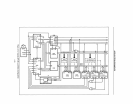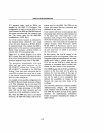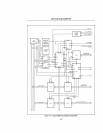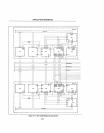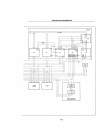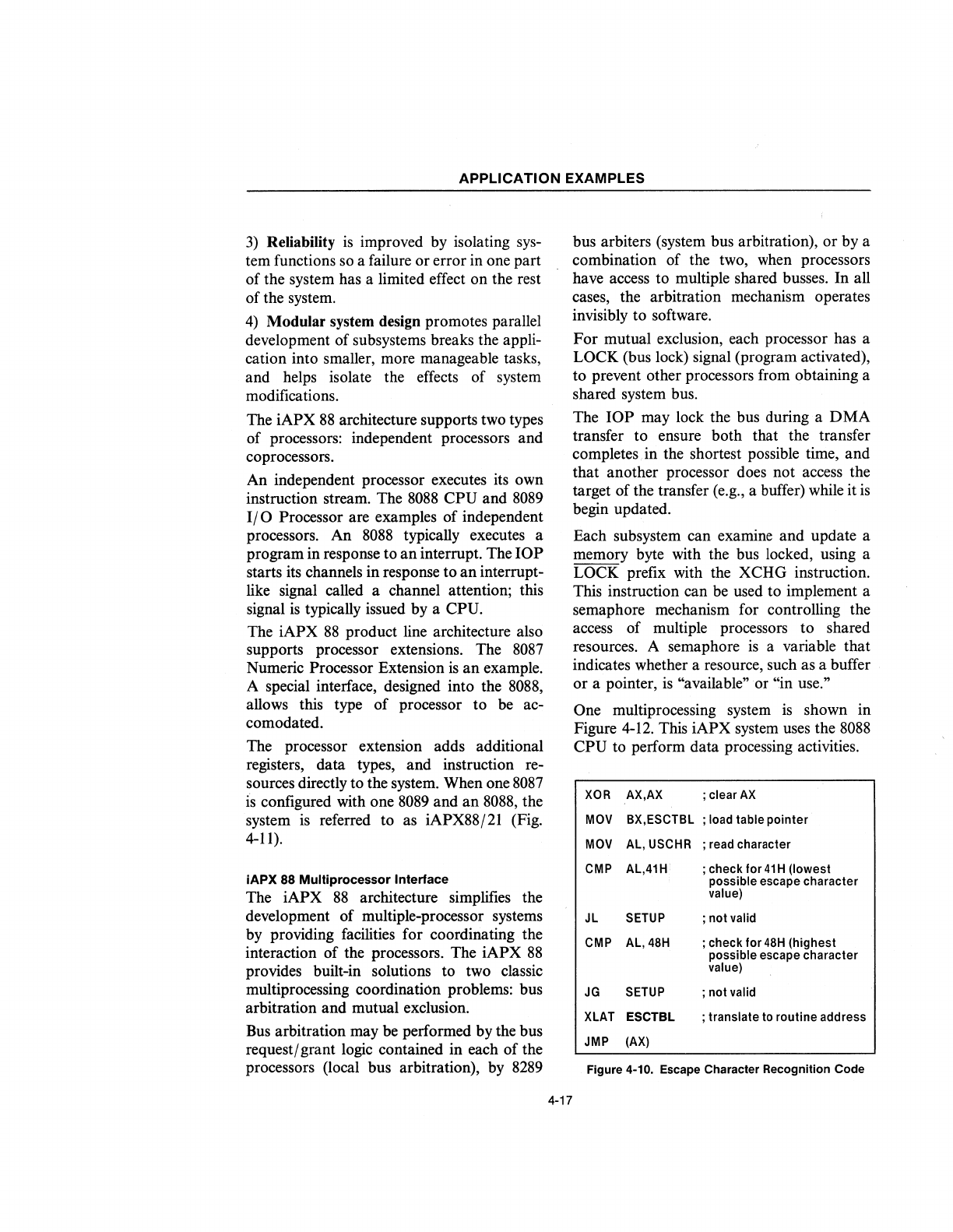
APPLICATION
EXAMPLES
3)
Reliability
is
improved by isolating
sys-
tem functions
so
a failure or error in one part
of the system has a limited effect on the rest
of the system.
4) Modular system design promotes parallel
development of subsystems breaks the appli-
cation into smaller, more manageable tasks,
and helps isolate the effects of system
modifications.
The iAPX
88
architecture supports two types
of processors: independent processors and
coprocessors.
An independent processor executes its own
instruction stream. The
8088
CPU and
8089
I/O
Processor are examples of independent
processors. An
8088
typically executes a
program in response to
an
interrupt. The
lOP
starts its channels in response to
an
interrupt-
like signal called a channel attention; this
signal
is
typically issued by a CPU.
The iAPX
88
product line architecture also
supports processor extensions. The
8087
Numeric Processor Extension
is
an
example.
A special interface, designed into the
8088,
allows this type
of
processor to be ac-
comodated.
The processor extension adds additional
registers, data types, and instruction re-
sources directly to the system. When one
8087
is
configured with one
8089
and
an
8088,
the
system
is
referred to as iAPX88/21 (Fig.
4-11).
iAPX
88
Multiprocessor Interface
The iAPX
88
architecture simplifies the
development
of
multiple-processor systems
by providing facilities for coordinating the
interaction of the processors. The iAPX
88
provides built-in solutions to two classic
multiprocessing coordination problems: bus
arbitration and mutual exclusion.
Bus
arbitration may be performed by the bus
request/ grant logic contained in each
of
the
processors (local bus arbitration), by
8289
4-17
bus arbiters (system bus arbitration), or by a
combination of the two, when processors
have access to
mUltiple
shared busses. In all
cases, the arbitration mechanism operates
invisibly to software.
For
mutual exclusion, each processor has a
LOCK (bus lock) signal (program activated),
to prevent other processors from obtaining a
shared system bus.
The
lOP
may lock the bus during a
DMA
transfer to ensure both that the transfer
completes
in
the shortest possible time, and
that another processor does not access the
target of the transfer (e.g., a buffer) while it
is
begin updated.
Each subsystem can examine and update a
memory byte with the bus locked, using a
LOCK prefix with the XCHG instruction.
This instruction can be used to implement a
semaphore mechanism for controlling the
access of multiple processors to shared
resources. A semaphore
is
a variable that
indicates whether a resource, such as a buffer
or
a pointer,
is
"available" or "in use."
One multiprocessing system
is
shown in
Figure
4-12.
This iAPX system uses the
8088
CPU to perform data processing activities.
XOR
AX,AX ; clear
AX
MOV
BX,ESCTBL ; load table
pointer
MOV
AL, USCHR
; read character
CMP
AL,41H
; check for41H (lowest
possible escape character
value)
JL
SETUP ; not valid
CMP
AL,48H
; check
for
48H
(highest
possible escape character
value)
JG
SETUP ; not valid
XLAT
ESCTBL ; translate to routine address
JMP
(AX)
Figure 4-10. Escape Character Recognition Code




